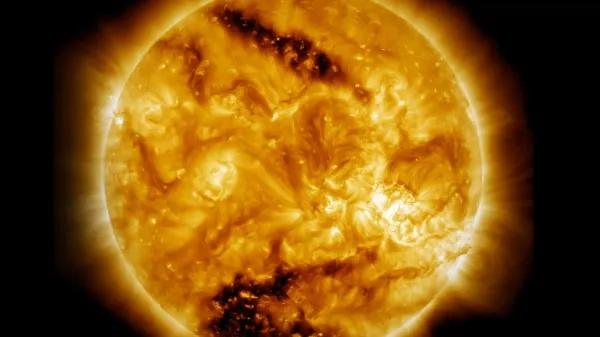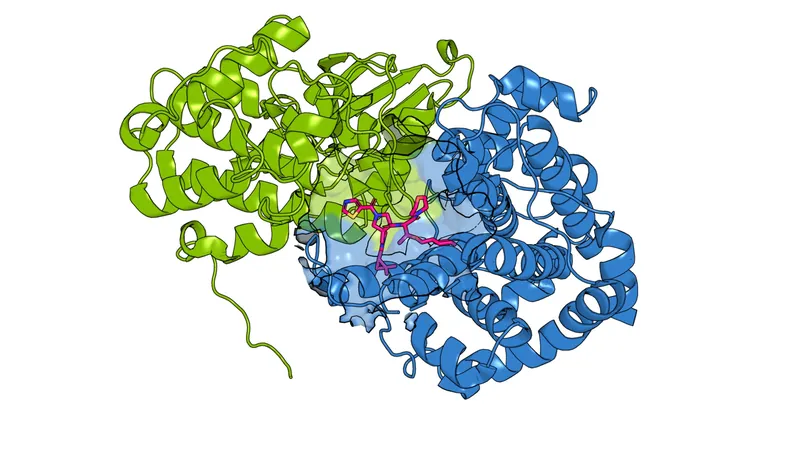
Breakthrough Discovery: The Enigma of the Sun's Corona Heating Finally Unraveled!
2024-10-11
Author: Daniel
The sun has always held secrets that intrigue scientists, but one of its greatest mysteries is the staggering temperature discrepancy between its surface and outer atmosphere. While the sun’s surface sizzles at around 10,000 degrees Fahrenheit, the solar corona—its outer atmosphere—reaches temperatures as high as 2 million degrees Fahrenheit, making it about 200 times hotter. This puzzling phenomenon has left astronomers and physicists baffled since 1939, when the corona's extraordinary heat was first documented.
Recent research led by Sayak Bose at the Princeton Plasma Physics Laboratory has taken us closer to uncovering the mechanisms behind this enigmatic heating. The team discovered that reflected plasma waves, particularly Alfvén waves, might be the key to understanding the intense heating of coronal holes—low-density areas of the solar corona characterized by open magnetic field lines that extend far into space. This new finding marks a substantial advancement in one of solar science's most compelling challenges.
"We knew coronal holes were hot, but the precise processes leading to their heating were shrouded in mystery," explained Bose, who is the lead author on a paper detailing the findings published in *The Astrophysical Journal*. "Our research indicates that plasma wave reflection plays a significant role in this heating process. This is the first laboratory experiment that demonstrates the reflection of Alfvén waves under conditions analogous to those observed in coronal holes."
Alfvén waves, named after Swedish physicist Hannes Alfvén, resemble the oscillations of guitar strings, but in the case of the sun, they are induced by shifting magnetic fields interacting with plasma. During their experiments, Bose and his team utilized the Large Plasma Device (LAPD) at UCLA to generate Alfvén waves in an environment mimicking that of the solar corona. They observed that these waves could reflect when encountering varying plasma densities and magnetic field strengths typical of coronal holes. The turbulence generated from these reflected waves leads to the heating that characterizes these regions.
Jason TenBarge, a visiting research scholar at PPPL and a contributor to the study, noted that previous hypotheses about Alfvén wave reflection as a cause for coronal heating lacked experimental backing—until now. "Our results validate that not only is wave reflection possible but that the energy reflected has the potential to contribute significantly to heating coronal holes," TenBarge remarked.
In addition to conducting laboratory experiments, the team used computer simulations to further validate their findings. "We put great emphasis on verification to ensure our results are accurate," said Bose. "The physics behind Alfvén wave reflections is complex yet fascinating, and this integrated approach can greatly enhance our comprehension of natural systems, notably our sun."
This groundbreaking research involved collaboration with scientists from Princeton University, UCLA, and Columbia University and was made possible through funding from the U.S. Department of Energy and the National Science Foundation.
As scientists continue to unravel the mysteries surrounding the sun, this discovery not only sheds light on the mechanisms at play in one of our solar system’s key elements but also opens new avenues for understanding the fundamental processes of heat and energy transfer in astrophysical phenomena. Stay tuned for more revelations from the outstanding world of solar research!


 Brasil (PT)
Brasil (PT)
 Canada (EN)
Canada (EN)
 Chile (ES)
Chile (ES)
 España (ES)
España (ES)
 France (FR)
France (FR)
 Hong Kong (EN)
Hong Kong (EN)
 Italia (IT)
Italia (IT)
 日本 (JA)
日本 (JA)
 Magyarország (HU)
Magyarország (HU)
 Norge (NO)
Norge (NO)
 Polska (PL)
Polska (PL)
 Schweiz (DE)
Schweiz (DE)
 Singapore (EN)
Singapore (EN)
 Sverige (SV)
Sverige (SV)
 Suomi (FI)
Suomi (FI)
 Türkiye (TR)
Türkiye (TR)